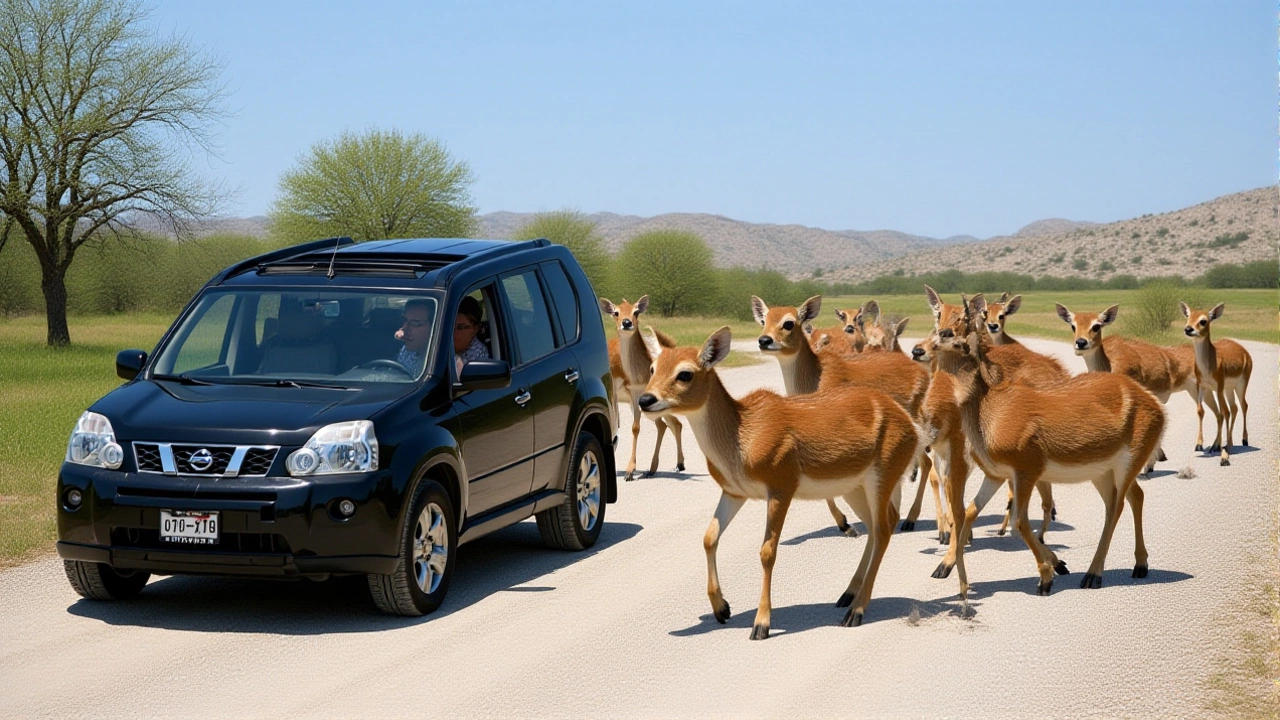When Benito, the 14‑year‑old giraffe, was finally unloaded at Puebla’s Africam Safari on Jan 24, 2024, the relief was palpable. The 1,200‑mile (1,900‑km) journey, overseen by Frank Camacho, CEO of the sanctuary, marked the end of a months‑long campaign by animal‑rights groups demanding a better life for the solitary giraffe who had spent years in cramped conditions at Ciudad Juárez. The move, which took roughly 40‑50 hours of careful transport, isn’t just a feel‑good story; it’s a landmark case of large‑animal relocation in Mexico.
Background of Benito’s Plight
Benito first became a media fixture in 2020 when a local newspaper highlighted that he was the only giraffe at the municipal park in Ciudad Juárez. Veterinarians documented chronic stress, limited space, and an inadequate diet – conditions that many animal‑welfare experts described as "harsh" and "lonely." By late 2023, three separate NGOs, including the Mexican Society for the Protection of Animals, filed formal complaints, urging the city to either find a partner zoo or improve his habitat.
The Complex 1,200‑Mile Transfer
On Jan 22, 2024, a specially equipped truck left giraffe relocation experts’ hands at Parque Central in Ciudad Juárez. The vehicle featured a climate‑controlled trailer, veterinary monitoring stations, and a shock‑absorbing suspension to protect Benito’s 2.4‑meter‑tall frame. The route threaded through six states, stopping briefly in Monterrey for a health check before crossing the Sierra Madre Oriental. According to the operation log, the giraffe’s heart rate remained stable, and no incidents were recorded.
"We treated Benito like a passenger on a cross‑country flight," Camacho told EL PAÍS after the unload. "Every minute counted, from the moment the gates closed in Juárez to the first bite of fresh acacia at Africam Safari."
Leadership and Past Relocations
Camacho isn’t a first‑timer. In 2016, he coordinated the transfer of two rhinos, Chacha 1 and Chacha 2, and three African elephants—Maggi, Kim, and the five‑ton giant Pirinolo—from Mexico to the Ukumarí Biopark in Pereira, Colombia. The Colombian venture, originally built on the former estate of Pablo Escobar, required similar logistical gymnastics, including air‑lifted crates and international CITES permits. Those successful moves gave Camacho credibility when activists approached Africam Safari with Benito’s case.
The sanctuary itself, founded in 1972, now houses nearly 2,000 animals across 30 habitats. Its director‑level staff includes a veterinary team of 12 and a dedicated animal‑behavior unit that monitors social integration for species like giraffes, which naturally live in herds.

Reactions from Animal Welfare Groups
Environmental NGOs hailed the transfer as a "victory for compassion." Maria López, spokesperson for the Mexican Society for the Protection of Animals, said, "Benito’s story shows that sustained pressure can move even the most entrenched bureaucracies. We hope this sets a precedent for the 30‑plus solitary large mammals currently housed in inadequate Mexican facilities."
However, not everyone is celebratory. Some local officials in Ciudad Juárez argued that the city lost a tourist draw, noting that park attendance dipped by 12 % after Benito’s departure. The municipal council has pledged to redevelop the former giraffe enclosure into a community garden.
What the Move Means for Mexican Zoos
The relocation underscores a shift toward regional cooperation facilitated by bodies like the Latin American Association of Zoological Parks and Aquariums (ALPZA), of which Camacho serves as vice‑president. ALPZA’s standards call for minimum enclosure sizes, social grouping, and enrichment programs. By meeting those criteria, Africam Safari now serves as a benchmark for other Mexican parks.
Experts predict that within the next six weeks, Benito will be introduced to a small herd of three females that arrived from a private reserve in Veracruz. The integration process will be monitored with infrared cameras and daily health checks, ensuring that stress markers stay low.
- Date of arrival: Jan 24, 2024
- Distance traveled: 1,200 miles (1,900 km)
- Transport time: 40‑50 hours
- New home: Africam Safari, Puebla
- Key advocate: Mexican Society for the Protection of Animals

Looking Ahead
Benito’s health will be tracked through blood panels, weight measurements, and behavioral observations. If the integration succeeds, Africam Safari plans to launch an educational program highlighting giraffe social structures, hoping to inspire similar moves for other solitary animals across the country.
Frequently Asked Questions
Why was Benito moved from Ciudad Juárez?
Activists documented that Benito lived alone in a small pen with limited enrichment, which caused chronic stress. The city’s lack of resources to expand his habitat led to a campaign that persuaded officials to transfer him to a larger, herd‑compatible enclosure at Africam Safari.
How was the 1,200‑mile journey managed?
A climate‑controlled trailer equipped with veterinary monitoring stations carried Benito. The route included checkpoints for health checks, and the entire trip lasted about 45 hours, keeping his stress indicators within normal ranges.
Who oversaw the relocation?
Frank Camacho, CEO of Africam Safari and vice‑president of ALPZA, directed the move, drawing on his prior experience moving large mammals to Colombia in 2016.
What impact does Benito’s arrival have on Mexican wildlife facilities?
The successful transfer sets a precedent for relocating solitary large animals to accredited zoos, encouraging other parks to meet ALPZA standards and potentially prompting policy revisions at the municipal level.
Will Benito be joined by other giraffes?
Yes. Africam Safari plans to introduce Benito to a small herd of three female giraffes from Veracruz within the next six weeks, monitoring behavior closely to ensure a smooth social integration.
